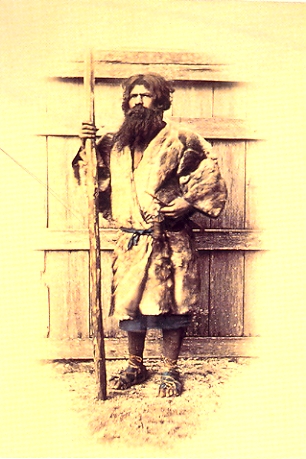
December 8, 2008
Loren is still on the road, trying to keep in contact remotely. In the meantime, guest blogger Brent Swancer continues his examination of the Ainu, with part II of his contribution from Saturday. If you recall, he left us noting that the focus of the debate swirling around one theory on the origins of the Ainu involves a curious piece of fossil evidence called the Kennewick Man (which was studied by a team that included paleoanthropologist Grover Krantz before his death).
The Ainu and the Kennewick Man
by Brent Swancer
December 8, 2008.

The Kennewick Man, also sometimes referred to as the Richland Man, is a skeleton which was accidentally found at the Lake Wahulla section of the Columbia River in Kennewick, Washington on July 28, 1996. The skeleton was in remarkably good condition, missing only the sternum and some bones in the hands and feet.
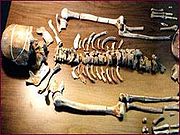
Upon examination, it was found that the skeleton lacked many distinctive features found in Native Americans, and exhibited some Caucasian features as well. In addition to features of the skull and bones, the condition of the teeth suggested a diet different from the Native Americans. For these reasons, it was thought that the remains were perhaps that of an early European explorer, however the mystery would only deepen upon further analysis.

Through preliminary radio carbon dating, it was found that the remains were around 9,000 years old. Also, a projectile tip of a type used from around 8,500 BP to 4,500BP was found lodged in the hip. It seemed that this was no European explorer, but rather a stone age individual with characteristics unlike the later Native Americans. Anthropologists and paleontologists rushed in to do more detailed examinations and try to determine the nature of these mysterious remains. Upon comparing the remains to 18 modern populations of humans, it was determined that the ancestry most closely resembled that of the Ainu.

The study of the Kennewick Man remains has long been embroiled in controversy. The remains were originally taken possession of by the U.S. Army Corps of engineers, who own the land on which the remains were found, however this was immediately challenged in court by the NAGPRA (Native American Graves Protection and Repatriation Act). NAGPRA states that any human remains found on federal lands that are found to be affiliated with a Native tribe can be claimed by that tribe.
Several tribes claimed the remains as their own and demanded their return for a proper burial. This was quickly opposed by a group of archeologists and anthropologists who claimed that NAGPRA did not apply in this case. And so the long legal battles surrounding the Kennewick man started, often holding up studies and even bringing research on the remains to a halt. Examination was halted in 1996 due to court battles and debates with Native tribes, only to resume again in 1998.
Scientific studies that were done on the skeleton from 1998 to 2000 were frequently dogged by legal woes, and it wasn’t until 2002 that a federal court ruled that NAGPRA did not apply to the remains as a cultural link was not met, and this allowed scientists better access to the remains. This ruling was upheld again in 2004, but the firestorm of controversy and legal motions are far from over. Currently, the skeleton is being held at the Burke Museum at the University of Washington, and is legally designated as the property of the U.S. Army Corps of Engineers.
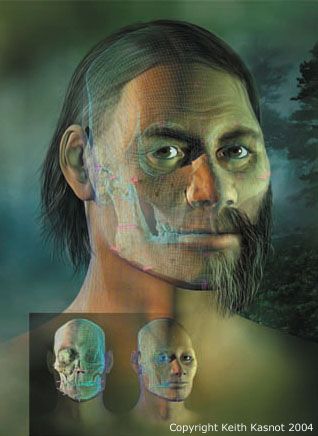
To date, despite the legal controversy, the Kennewick Man remains have been physically examined on various occasions using standard scientific methods and techniques, and some things have been gleaned from it. It is known that the man was between 45 and 55 years old, around 5’9″ in height, was muscular, and had received various injuries that appear to have healed before death. In addition, evidence suggests that the body was deliberately buried rather than left exposed to the elements. Yet the mystery of who this man was or where he came from remains as mysterious as ever. In 2006, results of studies performed on the remains in 2005 supported the earlier notion that these remains closely matched features found in the Ainu people.
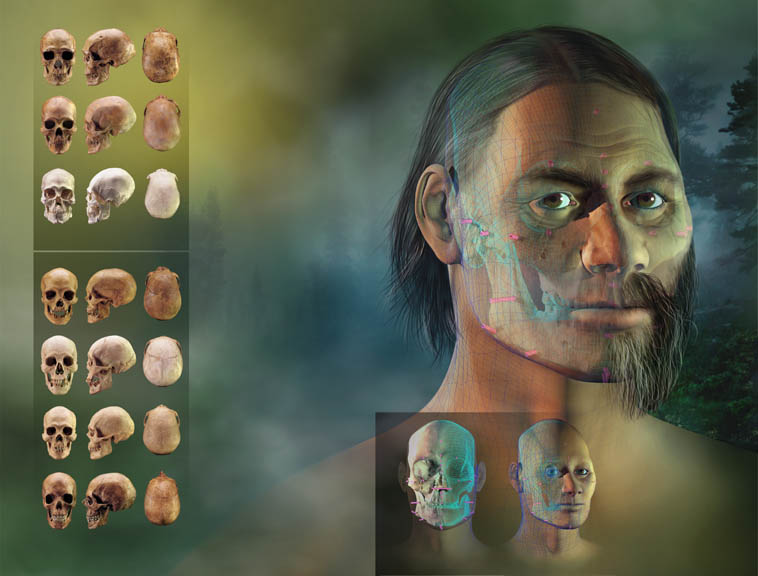
So is it possible that Ainu were some of the first humans to inhabit North America? The theory certainly has its share of detractors. Some insist that there are not enough samples to make any assumptions on the origins of the remains. They are quick to point out that the physical differences of a single specimen don’t mean anything in the larger picture and therefore the Kennewick Man is useless as evidence of anything. Others point to the greater physical diversity between individuals in remains dating over 8,000 years old, or even point to the blurry lines of race to begin with. It could be argued that human populations are not unambiguous or clearly separated biological groups so therefore any divisions made between biological populations are subjective and arbitrary, especially when looking at 9,000 years old bones.
The debate goes on, but the essential mystery remains. Who was Kennewick man? Further analysis of the remains may yield more answers, but if it is indeed the skeleton of an Ainu as speculated, then this would shake to the core our current conventional understanding of how and by whom the continent was first settled.
^^^^^^^^^^^^^^^^^^^^^^
Footnote from Loren:

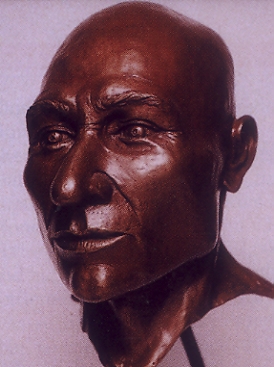
One of the first forensic reconstructions from the skull of the Kennewick Man looked extremely familiar to those who viewed it soon after its completion.

Very familiar.
About Loren Coleman
Loren Coleman is one of the world’s leading cryptozoologists, some say “the” leading living cryptozoologist. Certainly, he is acknowledged as the current living American researcher and writer who has most popularized cryptozoology in the late 20th and early 21st centuries.
Starting his fieldwork and investigations in 1960, after traveling and trekking extensively in pursuit of cryptozoological mysteries, Coleman began writing to share his experiences in 1969. An honorary member of Ivan T. Sanderson’s Society for the Investigation of the Unexplained in the 1970s, Coleman has been bestowed with similar honorary memberships of the North Idaho College Cryptozoology Club in 1983, and in subsequent years, that of the British Columbia Scientific Cryptozoology Club, CryptoSafari International, and other international organizations. He was also a Life Member and Benefactor of the International Society of Cryptozoology (now-defunct).
Loren Coleman’s daily blog, as a member of the Cryptomundo Team, served as an ongoing avenue of communication for the ever-growing body of cryptozoo news from 2005 through 2013. He returned as an infrequent contributor beginning Halloween week of 2015.
Coleman is the founder in 2003, and current director of the International Cryptozoology Museum in Portland, Maine.
Filed under Conspiracies, Cryptomundo Exclusive, Cryptotourism, CryptoZoo News, Cryptozoologists, Cryptozoology, Extinct, Fossil Finds, Guest Blog, Museums, Pop Culture